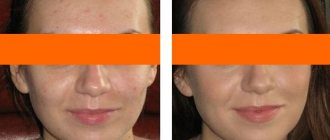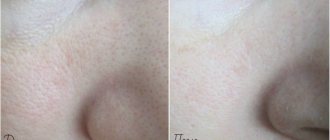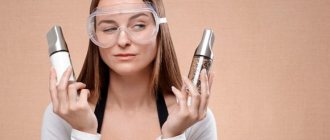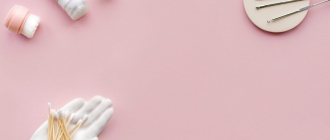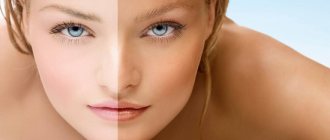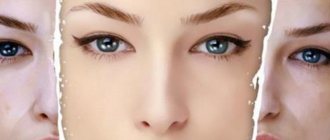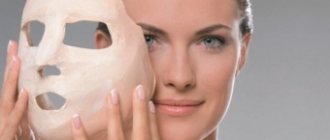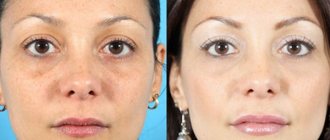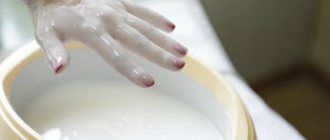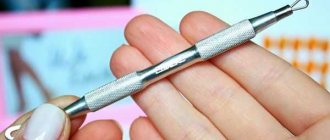Facial resurfacing is a mandatory cosmetic procedure that is included in the skin care complex. You can do it with the help of professional cosmetics; it is possible to use masks made from natural products and homemade scrubs. In any case, the cleansing effect will be present even after one use of the product, and a full course of resurfacing will significantly rejuvenate the dermis, making it firm, elastic and smooth.
Why do you need facial resurfacing ↑
Over time, dead skin cells accumulate and clog pores, leaving skin looking dull and tired. Laser skin resurfacing, offered by many beauty clinics, effectively removes dead cells, but the procedure is too harsh on the skin and can cause redness and irritation for hours or even days. If you're looking for skin rejuvenation options, know that there are other non-laser options to remove the dead outer layer for a more youthful, refreshed appearance.
Usually, when we talk about how to sand leather at home, two types of sanding come to mind - mechanical and surface chemical. These methods are the easiest to implement at home, plus they are quite safe and do not require any medical or cosmetic skills.
Indications for use
This is a basic home care procedure recommended for all skin types. There are no age restrictions; you can start using mechanical and chemical types of cleansing from adolescence to combat acne and excess synthesis of sebaceous secretions.
After 25 years, there is a natural decrease in metabolic processes, the synthesis of collagen and elastin slows down. To prevent sagging and the formation of wrinkles, it is worth carrying out regular care that activates intracellular processes.
Indications:
- tired, stressed skin;
- pigmentation;
- traces of photo and chronoaging;
- blackheads, comedones, acne;
- lumpy structure;
- unhealthy color;
- dryness, peeling;
- excessive secretion of sebium.
Mechanical peeling ↑
This is perhaps one of the easiest ways to make your skin more even and restore its healthy and vibrant appearance. In addition, you can independently select the main components of this unique scrub, the main condition here is that small solid particles should not injure your skin too much, otherwise it can cause serious inflammation.
Our task is to remove only the top layer of skin, which is also called the epidermis. Ground coffee, sugar, soda, and rice are suitable for this.
Bodyaga peeling ↑
If you are the owner of truly problematic skin, then we recommend that you pay attention to such a budget-friendly, but at the same time incredibly effective product as bodyaga.
You can easily find this powdery mixture in almost any pharmacy; it is made from the sponge of the same name. The peculiarity of this powder is that it consists of microscopic needles that exfoliate old skin. In addition, such peeling helps to normalize blood circulation in the tissues.
Typically, hydrogen peroxide and this powder are used for the procedure, which are mixed in equal proportions. After this, the mixture is carefully applied to the face and left for 15-20 minutes, after which it is massaged a little and washed off with water.
Care should be taken when mixing powder and peroxide, since inhaling dry bodyagi can lead to extremely disastrous consequences. It is also better to carry out the peeling procedure while wearing gloves.
It is very important to monitor your sensations, since, like any other natural component, thistle is an allergen, so if the skin under the mixture itches unbearably, it is recommended to get rid of it as soon as possible.
Also, do not forget that any peeling is not recommended during the summer period. Sun rays hitting damaged skin can cause unwanted pigmentation. Protective agents can only be applied after the skin has completely healed.
If your skin is sensitive, dry or too thin, then it is better to use more gentle methods. For those with normal skin, it is recommended to carry out this procedure no more than once a week.
Gentle mechanical peeling ↑
If you are afraid for the health of your skin, we recommend turning your attention to the so-called gommage. Its essence comes down to the fact that the scrub particles are so small that they simply cannot injure the skin in any way.
Typically, this procedure is used in cases where the skin is highly sensitive. A prerequisite is proper massaging; only in this case can significant results be obtained.
The skin is first thoroughly steamed, then the mixture is applied and massaged along special lines for several minutes. When the peeling dries, it is removed from the face along with particles of dead skin.
Typically, to make such mixtures, they use those products that can be ground into flour, for example, oatmeal, orange zest, semolina, and so on. If the purpose of such a procedure is also to nourish the skin, then yogurt or kefir is added to the composition as a fastening element. This makes the procedure even more delicate, and the time required for recovery is reduced to a minimum.
Preparatory stage
Unlike resurfacing in a salon, the home procedure does not require testing to identify contraindications.
It is better to prescribe a course of sessions for the autumn-winter period, but if the skin is not prone to pigmentation, it can be carried out throughout the year.
There are several recommendations to enhance the effectiveness of home care:
- in a few weeks you can introduce creams with AHA acids into your care; the active components facilitate the removal of keratinized epithelium;
- Select decorative products with anti-comedogenic composition;
- a week before the event, you should reduce physical activity, stop drinking alcohol, salty, spicy, and fatty foods.
Attention! Some medications can affect the condition of the integument; before the procedure it is not recommended to take antibacterial, hormonal, or drugs that affect blood flow.
Chemical superficial peeling ↑
It is difficult to find at least one girl who has not heard of chemical peeling. This procedure is very popular in beauty salons, as well as in special clinics. Its essence lies in the fact that a chemical composition is applied to the skin, which, penetrating deep, corrodes the top layer and promotes the generation of new tissue.
This type of peeling has several subtypes, which differ from each other in the depth of their effect on the skin. Of course, at home, even medium peeling is an almost impossible task, and numerous reviews confirm this, since only a specialist can calculate the concentration of the acid, as well as the time required to soak the substance.
You can easily perform a superficial type of procedure on your own. Of course, you won’t be able to get such impressive results as from a medium peel, much less a deep peel, but the effect will be extremely gentle. In addition, if your goal is not to get rid of very deep wrinkles, but just want to renew your facial skin a little, then this peeling will definitely suit you.
Weak acids are found in many fruits and foods. There are even entire lines of cosmetics that use this feature. For example, you can purchase peeling with lactic acid or tartaric acid. If you wish, you can simply use fruits in their original form.
Chemical peeling allows you to successfully combat pore impurities, narrow them and reduce the amount of sebum produced, which is extremely useful for those with overly oily skin.
Salicylic acid copes especially well with this task. It is quite strong, although it is considered superficial, so you should not be surprised if you notice peeling of the skin as a result of the procedure. In any case, no matter what acid you use, you should remember that the peeling mixture is left on the skin for no more than 5 minutes. This time is considered the safest. If the sensations are very unpleasant and you feel a burning sensation, then you should remove the acid from the skin as soon as possible.
Advantages and disadvantages
Professional resurfacing is a painful, traumatic procedure; the healing period is accompanied by prolonged discomfort and requires special care. But the effect can be compared to plastic surgery.
Home dermabrasion is a gentle method of maintaining normal skin condition. With regular practice, you can improve the general condition of the skin, cope with superficial wrinkles, and reduce the secretion of sebium.
But you can only smooth out deep wrinkles, restore an even structure after acne, and whiten photopigmentation by turning to a professional.
Advantages:
- possibility of carrying out throughout the year;
- accessibility of the procedure;
- general improvement in the condition of the integument;
- no side effects;
- no recovery period;
- a small list of contraindications;
- It is possible to choose the type of polishing according to your skin type.
Minuses:
- ineffective method for solving complex aesthetic problems;
- requires coursework.
You can do the polishing yourself, using effective recipes or advances in hardware cosmetology. The procedure is suitable for caring for all types of dermis, as a result, metabolic processes are improved. Regularity is the key to beautiful, healthy skin.
Video material “Peeling for facial skin at home” ↑
As usual, I suggest you watch a video about using olive oil and lemon for chemical peeling of facial skin.
Face skin resurfacing at home may not be able to give the same results as a salon procedure, but you can independently regulate both the intensity and its regularity. In any case, you will notice positive changes - your face will become more elastic, toned and take on a fresh complexion.
I hope you found what you were looking for. And if not, write in the comments about what types of peelings you would like to know more about. Share with your friends, click on the social media buttons if you liked the article and see you again!
With warmth and care, Ravila.
Related posts
How to improve your complexion: effective masks and creamsHome-made peelings and masks for dull facial skinMasks for sagging facial skin at homeWhich one to choose to perform a chemical peel for the skin of the face and body How to properly perform an acid peel for the face yourselfPeeling with phytic acid: the essence of the technique, reviews, photos Ferulic acid for facial skin peeling Bodyaga and peroxide for facial skin resurfacing Salicylic acid for facial skin peeling at home
Post-procedure care
Regardless of the type of home peeling, the skin needs to recover properly after such a procedure. For this, experts recommend:
- Do not touch your face with your hands again.
- Use soft products (foam) to cleanse the skin.
- Avoid using tonics, scrubs, and cosmetics.
- Do not go outside without sunscreen (regardless of the time of year).
- Avoid strenuous physical activity for a couple of days. Sweating can interfere with skin regeneration.
- Do not visit the bathhouse or sauna.
- Avoid swimming in pools and open water.
With simple superficial peeling, the skin is restored in just a couple of days. A more aggressive procedure requires weeks for skin regeneration.
